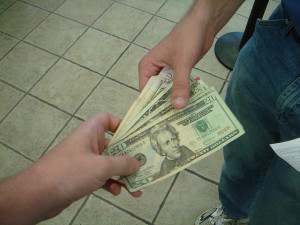Paying a debt right before filing bankruptcy can be appealing. It favors your chosen creditor and reduces the number of creditors in a bankruptcy case.

Only, a creditor paid on the eve of bankruptcy is at risk of having to give back the money. The payment may be a preference.
A bankruptcy trustee (or a debtor in possession) can recover payments made within 90 days of the bankruptcy filing.
Paying a debt before bankruptcy is a preference if the payment gave the creditor more than other, similarly situated, creditors would get through the bankruptcy process.
Why eve-of-filing payments are recoverable
The policy behind the statute is to diminish the advantages that a creditor might get by litigation or by aggressive collection action.
The point is to discourage collection action that might force the debtor into bankruptcy. That is accomplished by making payments received in the 90 days before the filing recoverable in bankruptcy.
It is neither wrong (under California law) of the debtor to make a preferential payment nor wrong of a creditor to accept it . The preference statutes are simply a creature of bankruptcy law that attempt to achieve equity between creditors.
If you are a creditor trying to collect from your customer, you are almost always better off accepting payment and dealing with any efforts to recover the money when, and if, the payor files bankruptcy.
Is it a preference?
Bankruptcy Code §547 defines a preference as
- Transfer (usually payment) on account of an antecedent (as opposed to current) debt;
- Made while the debtor was insolvent;
- To a non insider creditor, within 90 days of the filing of the bankruptcy;
- That allows the creditor to receive more on its claim than it would have, had the payment not been made and the claim paid through the bankruptcy proceeding.
Note that payments to a fully secured creditor aren’t preferences because the creditor didn’t get more than he would have in bankruptcy, where the creditor would get the value of the collateral.
A non obvious preference may occur when the creditor converts an unsecured debt to a secured debt by recording a financing statement long after the transaction with which it was associated; by obtaining a writ of attachment; or by recording a judgment lien. The Bankruptcy Code’s definition of transfer is very broad.
Creditors are best served by the prompt perfection of such liens to lessen the possibility that the advantage obtained by getting the lien is lost in a preference recovery action in a subsequent bankruptcy.
Defenses to preference actions
Defenses to the recovery of a preference are found in 11 U.S.C. 547(c). They include:
- contemporaneous exchanges;
- payments made in the ordinary course of the business of the debtor and the creditor on ordinary business terms; and
- security interests that secure debts that bring new value to the debtor.
- amounts of subsequent credit extended and unpaid.
These defenses need to be raised in an answer to a preference complaint. The burden of proof lies with the creditor to establish that despite the elements of a preference, the transfer is protected by one or more of these defenses.
Insider preferences
The bankruptcy code also permits the recovery of payments on old claims owed to insiders, such as relatives, corporate officers or directors, or related entities.
For insiders, the trustee can look back to payments made within a year of the bankruptcy filing. This provision attempts to prevent the debtor from paying relatives and business decision makers at the expense of the trade creditors.
In an insider preference action, there is no presumption that the debtor was insolvent when the payment was made. That makes it more complex for a trustee to succeed at trial.
So paying debts before bankruptcy may complicate, rather than simplify a bankruptcy case.
More
How the 90 day rule applies to individuals in bankruptcy
When your customer is in financial trouble
Image courtesy of Quazie
